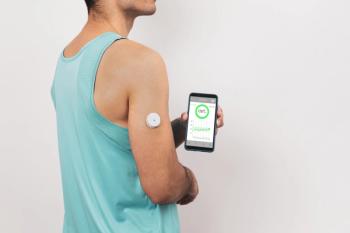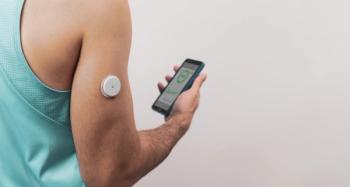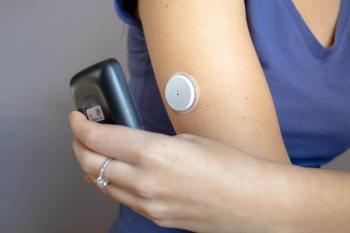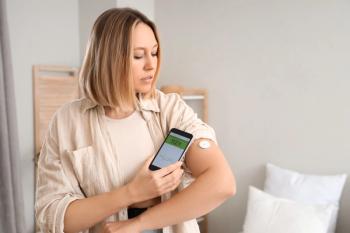Combining the use of continuous glucose monitors (CGM) with regular physical exercise could improve self-care behaviors and reduce the risk of long-term health complications in patients with type 2 diabetes (T2D), according to recent research published in the journal Science and Sports.1 The authors of the study said the findings could “substantially mitigate the financial burdens associated with diabetes management.”
Over 500 million people globally have a diagnosed case of diabetes, of which 96% are T2D.2 The prevalence of T2D is expected to increase significantly by the year 2050 due to a continuing rise in obesity, representing a substantial public health concern. However, despite the main drivers of diabetes being well understood, there are currently no effective mitigation strategies in place and there is also a critical need for better access to diabetes care.
Key Takeaways
- Combining CGM with regular exercise significantly improves self-care behaviors and glycemic control in patients with T2D. The study showed that the group using both CGM and exercise had higher Diabetes Self-Care Scale (DSCS) scores compared to the CGM-only group.
- The findings suggest that this combined approach could substantially reduce the long-term financial burdens associated with diabetes management, highlighting the potential economic benefits of improved self-care strategies.
- Despite the benefits, widespread adoption of CGM is hindered by its high cost, particularly in less developed regions. The study emphasizes the need for effective strategies to promote diabetes self-care and enhance health outcomes while addressing the cost barriers.
“Enhancing individuals’ adherence to prescribed self-care behaviors assumes a pivotal role in attaining and sustaining targeted blood glucose levels, which form the cornerstone of diabetes management,” the authors wrote. “Given the escalating prevalence and economic ramifications of diabetes, an urgent imperative exists to identify effective strategies capable of enhancing self-care behaviors, thereby fostering efficacious diabetes management.”
READ MORE: Type 2 Diabetes Impacts Mental Health, but Continuous Glucose Monitors Can Help
A team of investigators from the University-Town Hospital of Chongqing Medical University in China conducted a study to compare the effectiveness of CGM and CGM combined with regular exercise in promoting self-care behaviors and glycemic control in patients with T2D. For the study, participants either wore a CGM for 2 weeks or wore a CGM for the same amount of time while engaged in a 3-month exercise prescription.
The study cohort included 65 patients, of which 37 were male and 28 were female, who had a diagnosed case of T2D and were between the ages of 18 and 65. Patients were excluded from the study if they had any diabetes-related complications that were incompatible with physical exercise, including a confirmed cancer diagnosis, a resting heart rate exceeding 100 beats/min, blood pressure higher then 160/90 mmHg, and a fasting plasma glucose concentration of 16.7 mmol/L or higher.
In order to evaluate diabetes self-care management, investigators employed the Diabetes Self-Care Scale (DSCS), a 26-item assessment that measures 6 dimensions of self-management. The 6 measures include diet, physical exercise, medication adherence, blood glucose monitoring, foot care practice, and the management of hypo- and hyperglycemic.
Investigators found that there were improvements in DSCS scores in both the CGM and CGM plus exercise groups. However, the CGM plus exercise group achieved a higher score than CGM alone at 112.7 ± 10.9 and 84.8 ± 19.3, respectively. Participants who wore a CGM for 2 weeks and did regular physical exercise had improved fasting glucose and 2 hours-postprandial glucose levels, while patients wearing CGM alone did not.
Study limitations include a lack of a dedicated exercise group, and that participant adherence to the exercise protocol relied on self-reported data, which may have resulted in inadvertent or deliberate misrepresentation of exercise behaviors.
“Our findings offer valuable insights for healthcare professionals and policymakers aiming to formulate effective strategies to promote diabetes self-care and enhance health outcomes among individuals with T2D,” the authors concluded. “CGM devices provide patients with real-time data, empowering them to take immediate actions. However, the widespread adoption of CGM in diabetes management is hindered due to its high cost, particularly in less developed regions.”
READ MORE: Continuous Glucose Monitoring Resource Center
References
1. H Yang, Y Cheng, Y Zhao, et al. Exercise combing with short-term continuous glucose monitoring promotes diabetes health self-care scale and glycemic control in individuals with type 2 diabetes. Science & Sports. 2024, ISSN 0765-1597. https://doi.org/10.1016/j.scispo.2023.11.006.
2. GBD 2021 Diabetes Collaborators. Global, regional, and national burden of diabetes from 1990 to 2021, with projections of prevalence to 2050: a systematic analysis for the Global Burden of Disease Study 2021 [published correction appears in Lancet. 2023 Sep 30;402(10408):1132]. Lancet. 2023;402(10397):203-234. doi:10.1016/S0140-6736(23)01301-6
















































































































